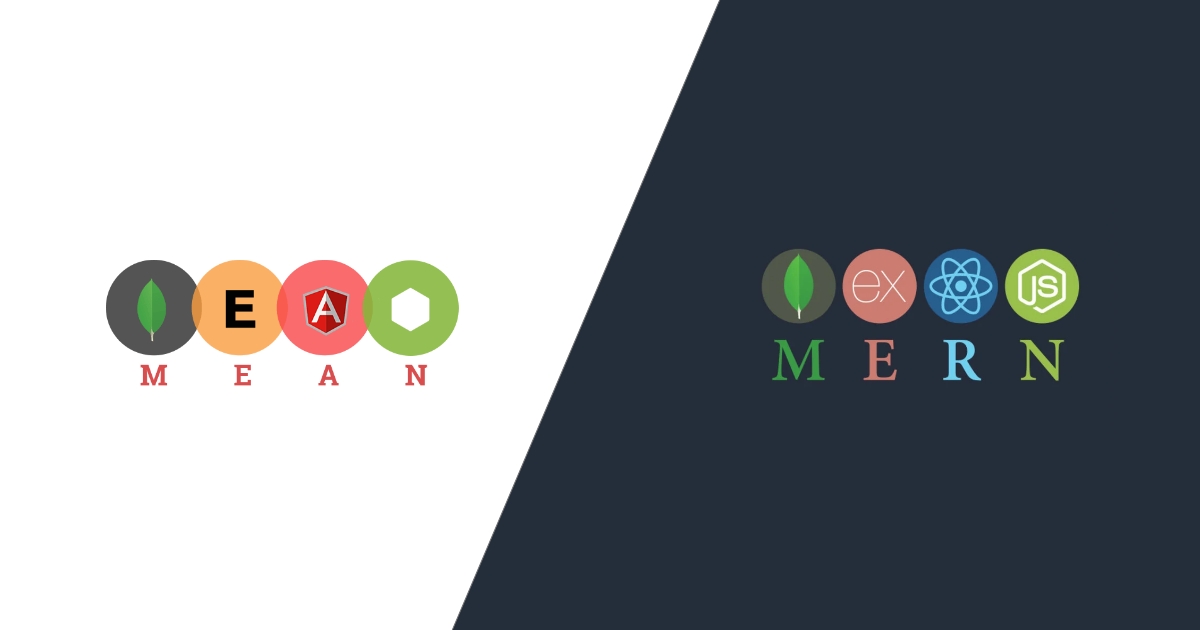MEAN vs. MERN: Which Tech Stack Should You Choose?
 Animesh Kumar
Animesh Kumar
Choosing the right tech stack for your web development project can feel like picking the right tools for a big DIY project at home. Two popular stacks are MEAN and MERN. Let me break them down with real-life examples to make it easy to understand.
What is MEAN?
MEAN stands for:
MongoDB: A NoSQL database
Express.js: A web application framework for Node.js
Angular: A front-end web framework
Node.js: A JavaScript runtime
Think of MEAN as a well-organized toolbox. Each tool (technology) in this stack has a specific purpose.
What is MERN?
MERN stands for:
MongoDB: A NoSQL database
Express.js: A web application framework for Node.js
React: A front-end library
Node.js: A JavaScript runtime
MERN is like a similar toolbox but with a different tool for the front end (React instead of Angular).
Real-Life Example: Building a House
Imagine you’re building a house. Here’s how MEAN and MERN compare in this scenario:
MongoDB: Think of MongoDB as the construction site where all your building materials are stored. Both MEAN and MERN use this same site, making it easy to store and retrieve your data.
Express.js: This is like the project manager who coordinates all the different parts of your house building. They make sure everything runs smoothly. Both stacks use Express.js as their project manager.
Angular vs. React:
Angular (MEAN): Imagine Angular as a versatile worker who can handle multiple tasks at once. They can manage the whole front of the house, from the windows to the doors to the paint. Angular is a full framework, so it’s like having a worker who does it all.
React (MERN): Now, think of React as a specialist who’s really good at building windows. They focus on making each window perfect, and they work fast. React is a library, so it’s like having a specialist for specific tasks.
Node.js: Node.js is the power source that keeps all your tools running. It’s the same in both MEAN and MERN, providing the energy (runtime environment) to get the job done.
Why Choose MEAN?
Full Framework: Angular provides a complete framework, so you get everything you need in one package.
Two-Way Data Binding: Angular automatically updates the view whenever the model changes and vice versa.
Structured Approach: Angular’s structure is strict, which can be good for larger projects needing a well-organized codebase.
Why Choose MERN?
Component-Based: React uses components, which are like small, reusable building blocks. This makes your code more modular and easier to manage.
Fast and Efficient: React is known for its speed and efficiency, thanks to its virtual DOM.
Learning Curve: React has a simpler learning curve compared to Angular, making it easier to pick up for beginners.
Conclusion
Choosing between MEAN and MERN depends on your project needs and personal preference. If you want a complete, all-in-one solution with a structured approach, MEAN might be the way to go. If you prefer flexibility, speed, and a simpler learning curve, MERN could be your best bet.
In the end, both stacks are powerful and capable of building amazing web applications. It’s like choosing between two great sets of tools – it all comes down to what you’re building and how you like to work.
Liked reading?
Let me know in the comments section, and do like & subscribe to my newsletter.
Subscribe to my newsletter
Read articles from Animesh Kumar directly inside your inbox. Subscribe to the newsletter, and don't miss out.
Written by

Animesh Kumar
Animesh Kumar
I’m a software developer who loves problem-solving, data structures, algorithms, and competitive coding. I’ve a keen interest in product development. I’m passionate about AI, ML, and Python. I love exploring new ideas and enjoy innovating with advanced tech. I am eager to learn and contribute effectively to teams.